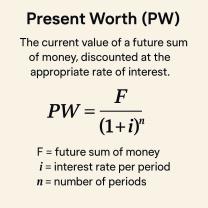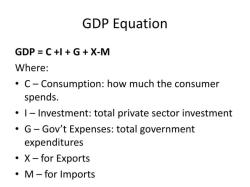What are the signs of market failure?
Market failure refers to situations where the allocation of goods and services by a free market is not efficient, leading to economic inefficiencies. Several signs or indicators can suggest the presence of market failure. Here are some key signs:
Externalities:
- Sign: Presence of external costs or benefits not reflected in market prices.
- Example: Air or water pollution where the costs are borne by society (negative externality) or the benefits of education that spill over to others (positive externality).
Public Goods:
- Sign: Inadequate provision of goods with non-excludable and non-rivalrous characteristics.
- Example: Lack of private investment in national defense, as private firms may not find it profitable to provide public goods.
Imperfect Competition:
- Sign: Existence of monopoly power or significant market concentration.
- Example: High prices and limited choices due to a lack of competition, as seen in industries dominated by a single firm or a small number of firms.
Incomplete Information:
- Sign: Information asymmetry leading to suboptimal decisions by buyers or sellers.
- Example: Used car sales where the seller has more information about the car's condition than the buyer, potentially resulting in a transaction that is not in the buyer's best interest.
Income Inequality:
- Sign: Disparities in access to essential goods and services based on income.
- Example: Limited access to healthcare or education for lower-income individuals, leading to unequal opportunities and outcomes.
Market Power:
- Sign: Significant control or influence by a small number of sellers in a market.
- Example: Monopoly or oligopoly power leading to the ability to set prices above competitive levels and reduce output.
Short-Term Focus:
- Sign: Overemphasis on short-term gains at the expense of long-term sustainability.
- Example: Overuse of natural resources due to a focus on immediate profits without considering long-term environmental consequences.
Inequitable Distribution:
- Sign: Unequal distribution of wealth and resources.
- Example: Concentration of wealth in a small segment of the population, leading to social and economic disparities.
Recognizing these signs is crucial for policymakers and economists to identify areas where market mechanisms may be failing and to implement corrective measures, such as regulations, taxes, subsidies, or other interventions, to improve economic efficiency and promote societal welfare.
Identifying red flags: What are the signs of market failure?
There are a number of signs that can indicate market failure. These include:
- High prices: When prices are above the competitive level, it may be a sign that firms have market power and are restricting output.
- Low quality: When the quality of goods and services is low, it may be a sign of incomplete information or externalities. For example, buyers may not have all of the information they need to assess the quality of a product, or sellers may have incentives to produce low-quality goods and services if the costs of doing so are not reflected in the market price.
- Inefficiency: When markets are inefficient, there may be a waste of resources. For example, there may be overproduction or underproduction of goods and services.
- Unfairness: When markets are unfair, they may benefit some people at the expense of others. For example, firms with market power may be able to exploit consumers, or externalities may impose costs on people who are not involved in the market activity.
Recognizing indicators and symptoms of market failure in economic systems
Here are some indicators and symptoms of market failure in economic systems:
- Monopolies and cartels: These firms have market power and can restrict output and raise prices above the competitive level.
- Price ceilings and floors: Government policies that impose price ceilings or floors can lead to shortages and black markets.
- Externalities: Externalities can lead to overproduction or underproduction of goods and services. For example, pollution is a negative externality that can lead to overproduction of polluting goods.
- Information failures: Incomplete information can lead to market failures such as adverse selection and moral hazard. For example, adverse selection can occur in the insurance market when people who are more likely to file claims are more likely to purchase insurance.
- Government failure: Government policies may not achieve their intended goals or lead to unintended consequences. For example, a government policy that provides subsidies to farmers may lead to overproduction and waste.
Tips for policymakers and economists on addressing potential market failures
Policymakers and economists can address potential market failures in a number of ways. These include:
- Promoting competition: Governments can promote competition by setting antitrust laws and preventing monopolies and cartels.
- Correcting for externalities: Governments can correct for externalities by imposing taxes and subsidies. For example, the government can tax pollution to reduce the negative externalities of pollution.
- Providing public goods: Governments can provide public goods and services that are not provided by the market. For example, the government can provide national defense, education, and healthcare.
- Regulating information: Governments can regulate information to reduce the risk of incomplete information. For example, the government can require firms to disclose certain information about their products and services.
- Designing better government policies: Governments can design better government policies to avoid market failures. For example, the government can design subsidy programs in a way that does not lead to overproduction and waste.
By taking these steps, policymakers and economists can help to ensure that markets function efficiently and fairly.













